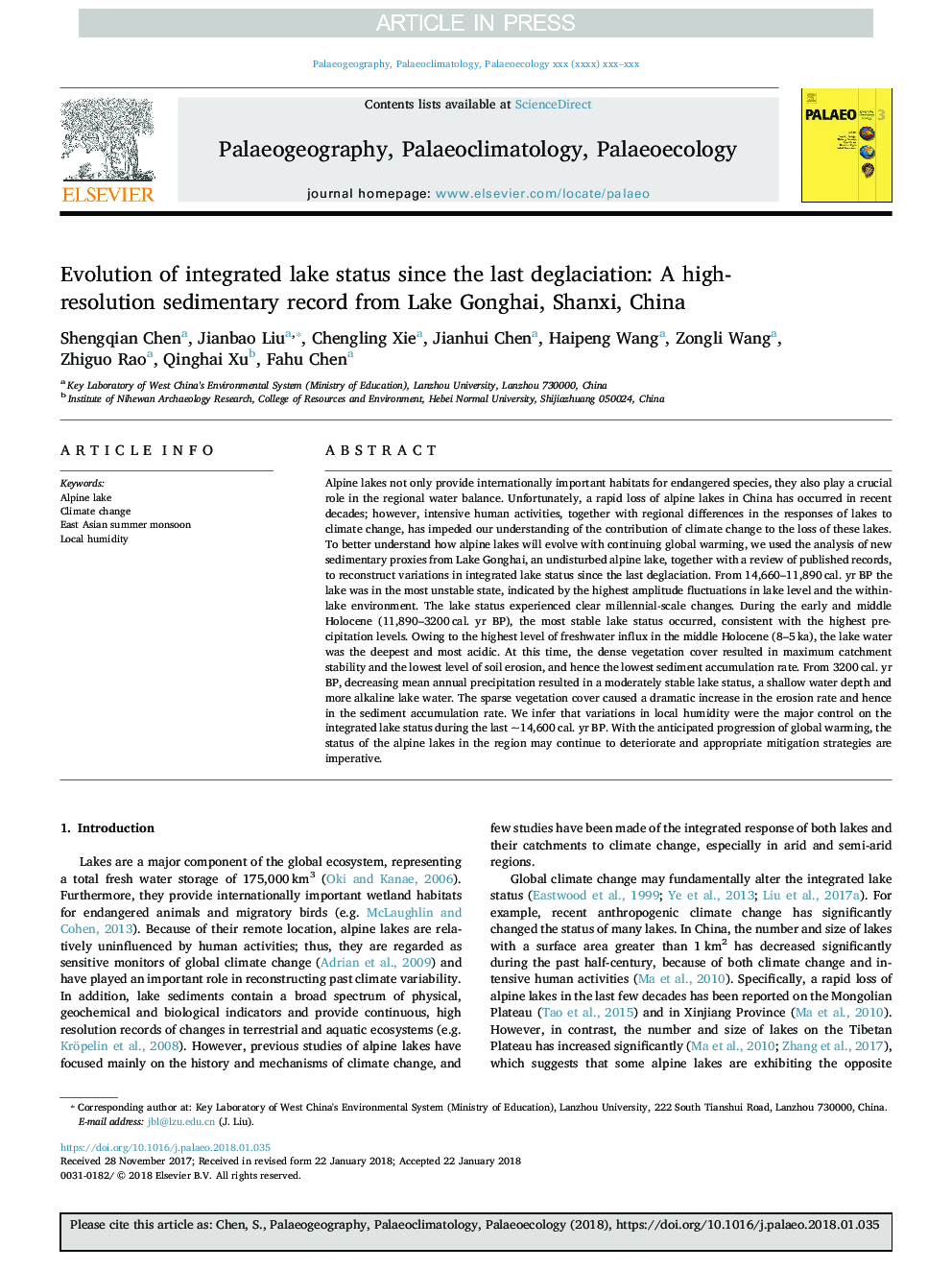| Article ID | Journal | Published Year | Pages | File Type |
|---|---|---|---|---|
| 8868291 | Palaeogeography, Palaeoclimatology, Palaeoecology | 2018 | 8 Pages |
Abstract
Alpine lakes not only provide internationally important habitats for endangered species, they also play a crucial role in the regional water balance. Unfortunately, a rapid loss of alpine lakes in China has occurred in recent decades; however, intensive human activities, together with regional differences in the responses of lakes to climate change, has impeded our understanding of the contribution of climate change to the loss of these lakes. To better understand how alpine lakes will evolve with continuing global warming, we used the analysis of new sedimentary proxies from Lake Gonghai, an undisturbed alpine lake, together with a review of published records, to reconstruct variations in integrated lake status since the last deglaciation. From 14,660-11,890â¯cal. yr BP the lake was in the most unstable state, indicated by the highest amplitude fluctuations in lake level and the within-lake environment. The lake status experienced clear millennial-scale changes. During the early and middle Holocene (11,890-3200â¯cal. yr BP), the most stable lake status occurred, consistent with the highest precipitation levels. Owing to the highest level of freshwater influx in the middle Holocene (8-5â¯ka), the lake water was the deepest and most acidic. At this time, the dense vegetation cover resulted in maximum catchment stability and the lowest level of soil erosion, and hence the lowest sediment accumulation rate. From 3200â¯cal. yr BP, decreasing mean annual precipitation resulted in a moderately stable lake status, a shallow water depth and more alkaline lake water. The sparse vegetation cover caused a dramatic increase in the erosion rate and hence in the sediment accumulation rate. We infer that variations in local humidity were the major control on the integrated lake status during the last ~14,600â¯cal. yr BP. With the anticipated progression of global warming, the status of the alpine lakes in the region may continue to deteriorate and appropriate mitigation strategies are imperative.
Related Topics
Physical Sciences and Engineering
Earth and Planetary Sciences
Earth-Surface Processes
Authors
Shengqian Chen, Jianbao Liu, Chengling Xie, Jianhui Chen, Haipeng Wang, Zongli Wang, Zhiguo Rao, Qinghai Xu, Fahu Chen,
